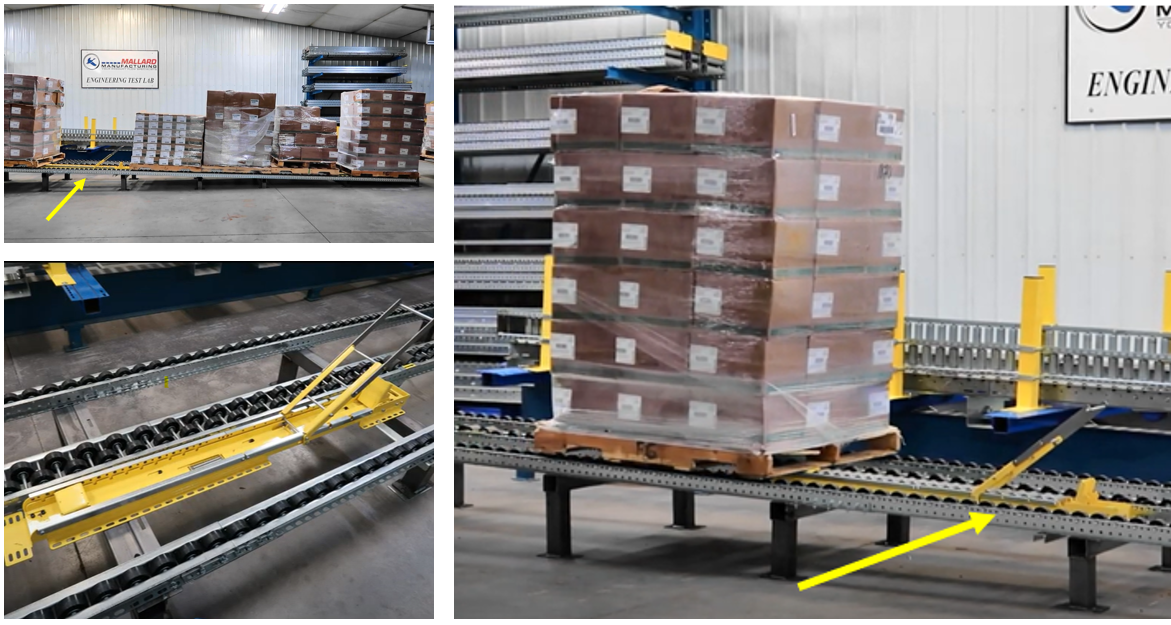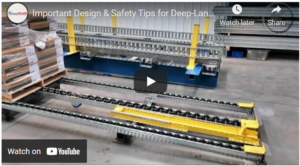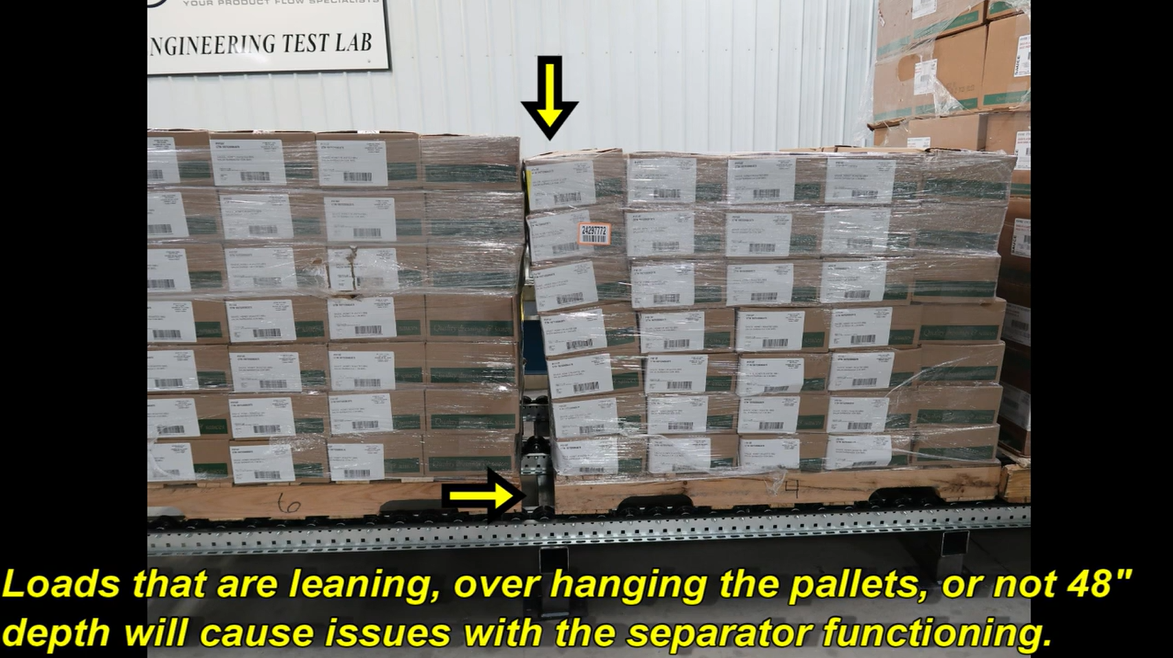Important Design & Safety Tips for Deep-Lane Pallet Flow Rack
SOLUTIONS
FOR THE TOUGHEST APPLICATIONS
"*" indicates required fields
 Pressure-Free Deep-Lane Pallet Flow Rack
Pressure-Free Deep-Lane Pallet Flow Rack
High-volume SKUs find an efficient home in pallet flow rack. The compact design, easy forklift access, and auto-filled pick face are three great reasons to choose pallet flow; however, one of the biggest advantages is the might of this system regarding deep-lane storage. Pallet flow rack goes toe-to-toe with automated systems when it comes to capacity –without the need for a shuttle.
Pallet flow rack can extend up to 20+ pallet positions deep per lane in any warehouse environment, including cold storage. A recent test conducted in the Mallard in-house Engineering Test Lab details the important features of building a safe deep-lane system. Take a look.
Here are the details of our deep-lane pallet flow test lane.
Pallet Flow Lane
- Wheel diameter – 2.9”
- Wheel centers – 3”/2”/3”
- Drop-in speed controllers at 56” intervals
- Lane depth – 414” approx 8-pallets deep
- Load weight – 900 lbs – 1870 lbs
- Pitch – 7/16” per foot
Pallet specs
- Standard GMA-style – 40″w x 48″d
- Smaller: 39.5” x 39.5” & 40” x 40”
The smaller pallets were block style and needed a substitute GMA-style pallet in this lane.
Deep-Lane Pallet Flow Rack Safety Features
The test video highlights several important safety features of the lane design including:
- Two pallet separators – Forklift Separator at the pick aisle, and Dual-Pallet Separator between the 5th & 6th pallets.
- Substitution of standard 40”w x 48”d pallets for smaller pallets
- Drop-in speed controllers
- Tight plastic wrap
What is a Pallet Separator & Why Do We Need Two?

Dual Pallet Separators address back pressure inherent in a pallet flow lane. Due to the pitched lane the rear pallets apply a certain amount of force onto the front pallet. In deep-lane designs, that force, called back pressure, can be significant, and it can cause a safety concern for the forklift when extracting the front pallet. By adding pallet separators, the back pressure is completely eliminated along with the risk.
Back Pressure Calculation:
Multiply the combined weight of the rear pallets by .06.
For example, in our 8-pallet test lane, the combined weight of the rear seven pallets is 8,820.
8,820 x .06 = 530 lbs of extra pressure on the front pallet without the pallet separators.
Isolating the front pallet with a forklift separator removes the added pressure of the rear pallets and ensures that the rear pallets cannot get hung up on the front pallet, as well. Quick, safe extraction is the goal, particularly at high elevations where the forklift operator may not clearly see the lane.
Deep-lane systems have separators behind the front pallet and further back in the lane to ensure that the full pressure of the rear pallets is spread between more than just the forklift separator at the second pallet position.
Why Do I Need a Standard Pallet Size in My Deep-Lane Pallet Flow?
Pallets of varying sizes will not work with pallet separators. Pallets that are smaller run the risk of not being “caught” and held by the separator, and pallets that are too deep can prevent the pallet behind from engaging with the separator as they advance down the lane.
As you see in the video, the Mallard team used standard GMA-style pallets underneath the smaller pallets to ensure the test lane functionality.
How Do I Control the Pallet Speed?
Pallet flow speed controllers fit seamlessly within the wheeled rails and help slow the pallets as they advance. The drop-in speed controllers in this test example make direct contact with the pallets, and the rubber-coated wheel acts to engage and slow the pallet. The test lane has the speed controllers at 56” intervals to ensure the pallets do not gain too much speed at any point down the lane.
Additionally, the pitch of the lane is significant in controlling the speed of the pallets. Both the pitch and speed controllers work together for a safe gravity flow design.
It’s a Wrap!
In general, it’s an important warehouse safety step to wrap pallets with smaller cartons and separate items. The wrap protects the inventory and prevents items from falling on personnel and equipment. That said, if the wrap is too loose, the items may shift and prevent the separator from engaging.
The Mallard team is ready to help you create the best gravity flow rack system to satisfy your storage challenges. Give our team a call for design & ordering support and schedule a test with our in-house test lab.


